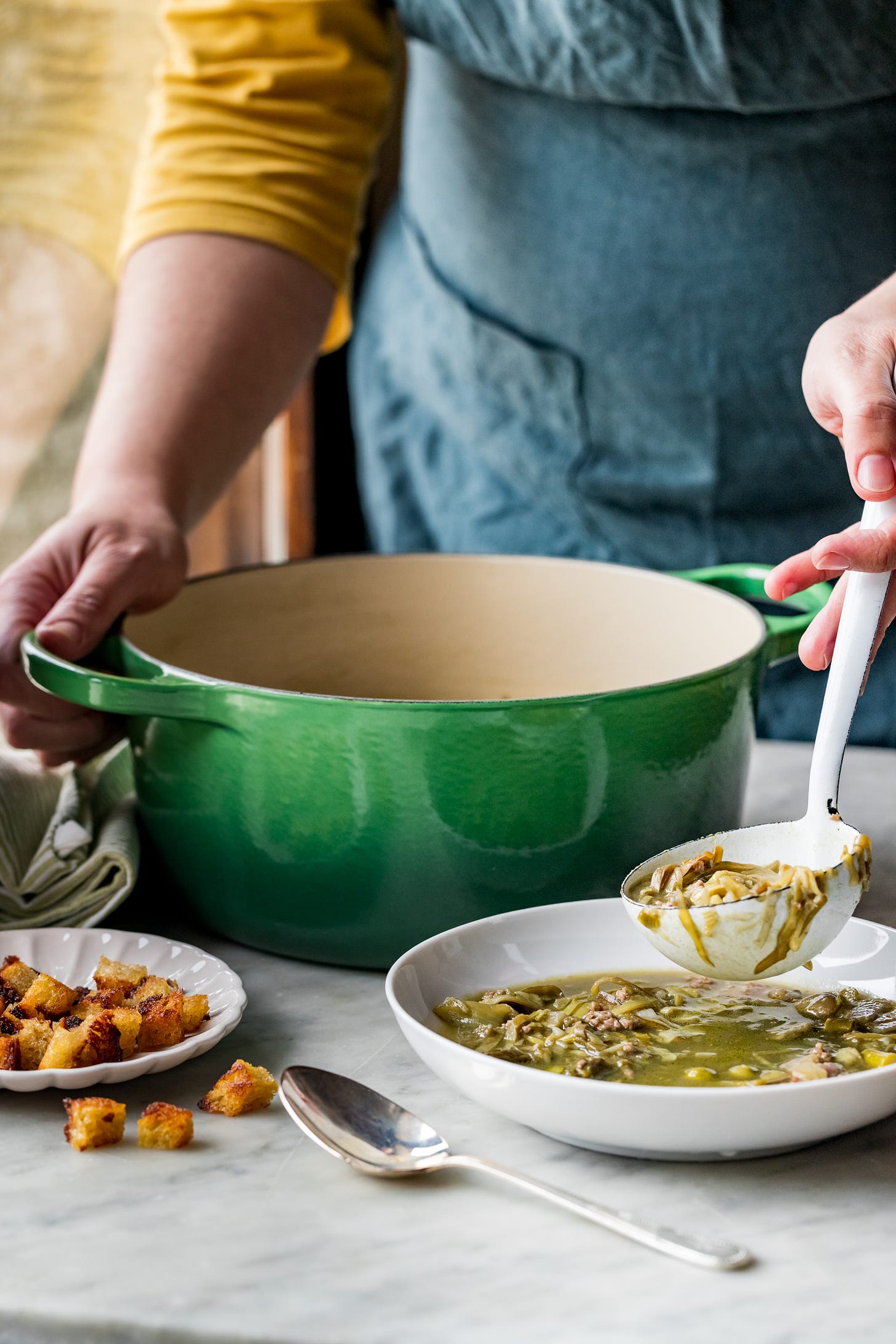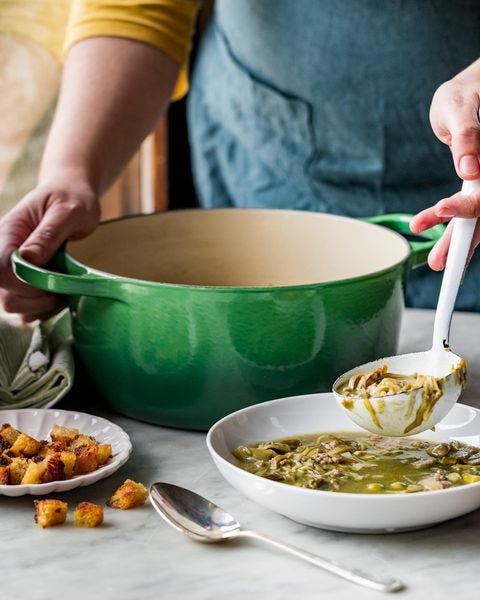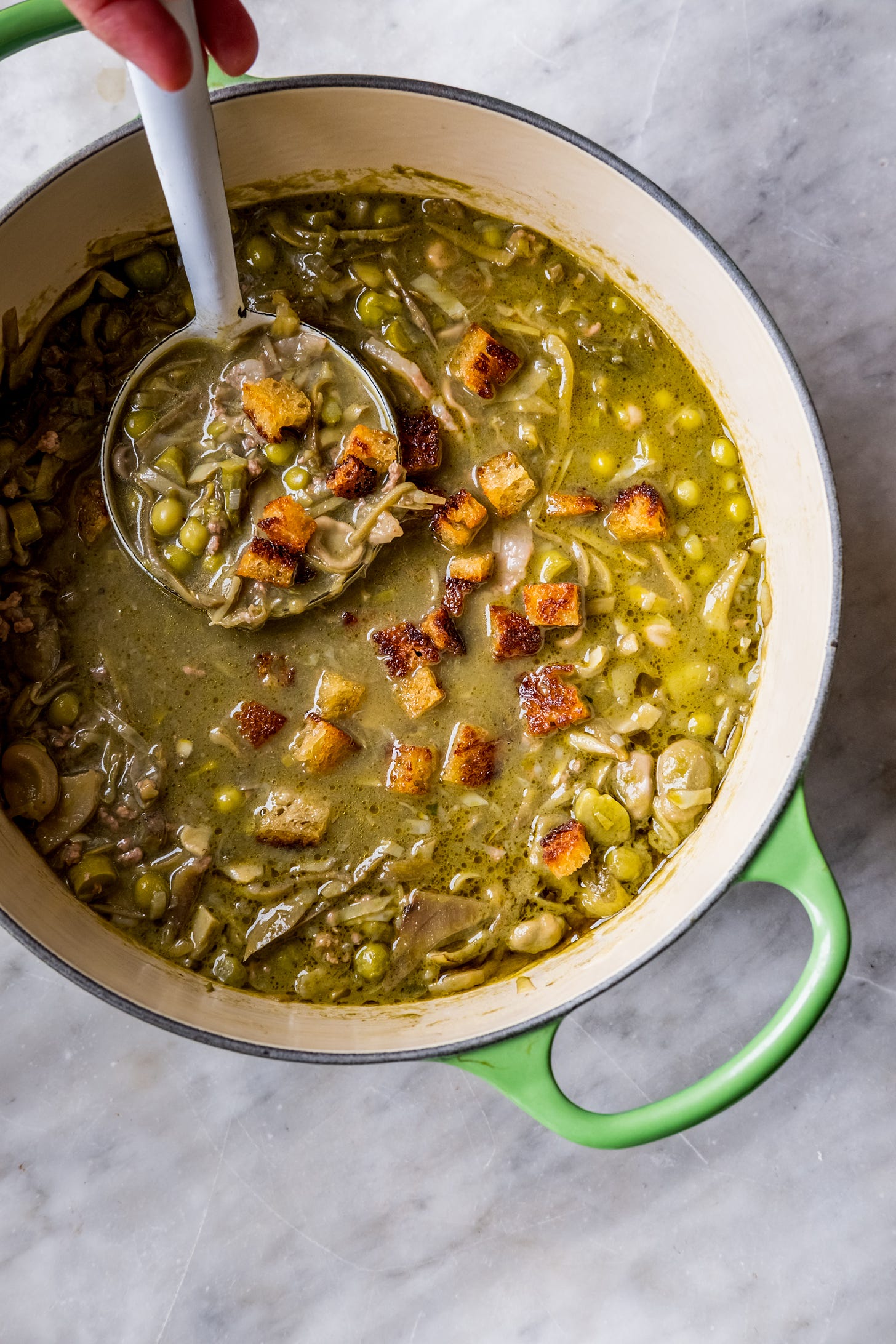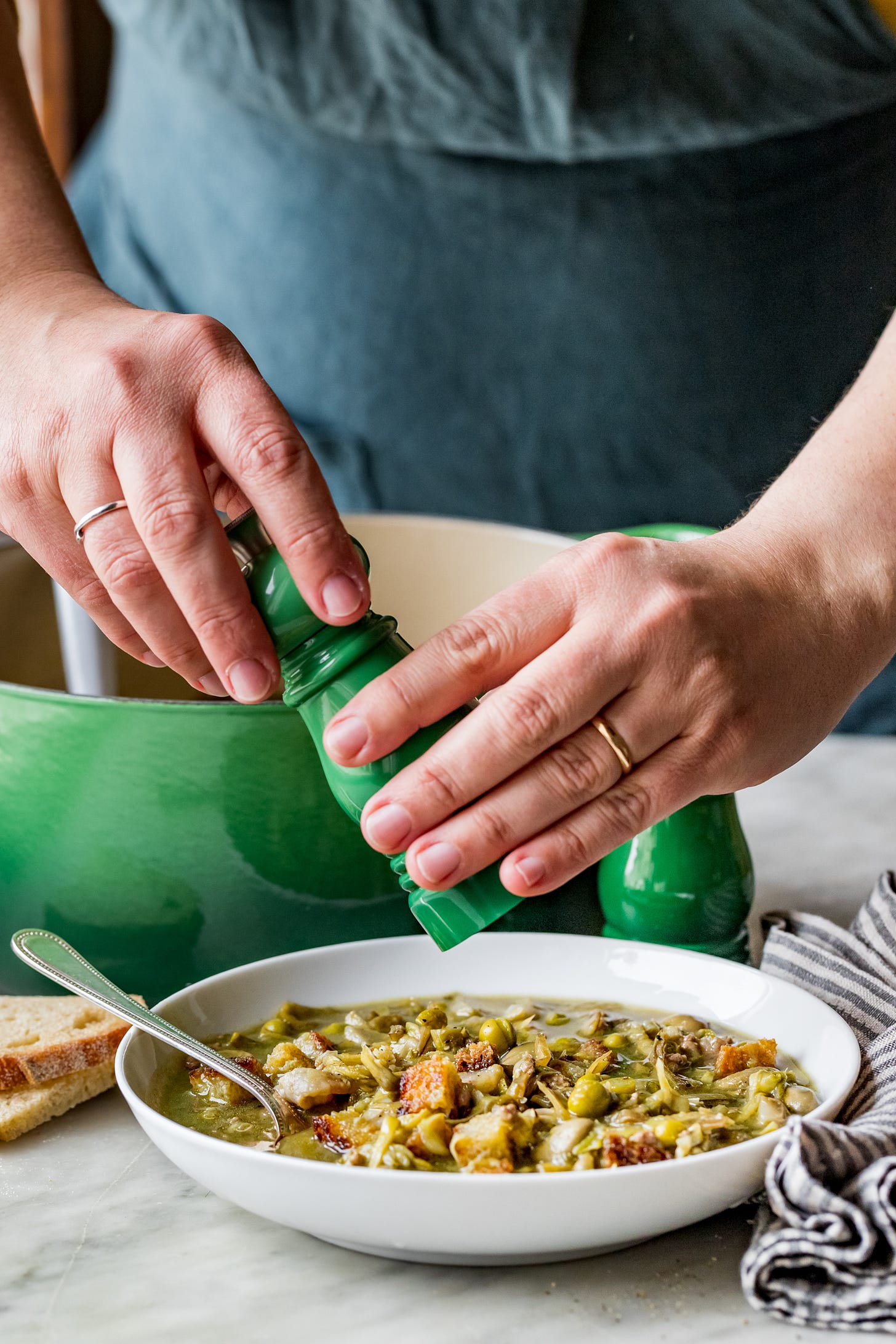Garmugia, the greenest Tuscan soup for spring
Make it even more verdant with a stock made with pea and fava bean pods, asparagus stalks, and the green part of a spring onion.
If there is one recipe in Tuscan cuisine that best represents the rebirth after winter and the celebration of micro-seasonality, that is Lucca's garmugia.
The garmugia was born as a restorative soup after the winter ailments, recommended to those who were recovering, or to the women who had recently given birth. After the winter we all have been through, this is surely the most suitable dish to celebrate the new season, the awakening from winter listlessness, and newfound energy.
Can you imagine the strength of this soup? Gentle, yet tireless in its renewal and revitalization, just like a leaf that, in its moment, sprouts and grows on a branch that seemed dead after winter.
We talk a lot about micro-seasonality, about ingredients that appear – or should appear – on the market stalls only for a few days. Garmugia is one of those recipes that can be made just for a very short period of time, that is when you find fava beans, peas, asparagus and artichokes on the market stalls. Working with these ingredients requires patience, but those minutes spent shelling peas and slicing artichokes can become a form of meditation in the kitchen, a way to embrace the freshness of the new season.
The greenness of the garmugia, its comforting and invigorating nature, and its seasonal character are the reasons why I chose it as the first recipe for #FeelGoodFood, Le Creuset Italia's new campaign born with the idea of contributing positively to everyday wellbeing, also thanks to the therapeutic value of cooking.
Garmugia is really a soup that represents my idea of well-being: cook it often and in large quantities when these ingredients are in season, as then you will have to wait another year to be able to taste it again.
And finally, the colour of the garmugia is a perfect match for #BambooGreen, Le Creuset's new elegant and playful colour that evokes calm and serenity, and reflects current trends in eco-sustainability.
Since we’re constantly fighting with the Instagram algorithm, let’s see if the newsletter superpowers can do the magic: it would be very helpful for us if you could head to the post, like it, and share it with your friends that love a good Tuscan soup!
Working with dream clients such as Le Creuset gives us the chance to develop recipes that we are glad to share with everyone, but Instagram is making it every day more difficult. So, if you have not seen us on Instagram for a while, you know it is not our fault, and you know who to blame! Find us, hug us, and let us know we are seen!
The greenest garmugia
You can read more about garmugia here on the blog.
Compared to that recipe, this has an extra step. I’m asking you to make a stock with a handful of pea and fava bean pods, some asparagus stalks, and the green part of one spring onion.
It is not just for the waste-not approach, something I truly appreciate in the kitchen, but also for the flavour!
Boiling, blending, and straining the vegetable scrap will give you a verdant, tasty stock that will concentrate the spring flavour of the soup.
If you need to print this recipe to keep it in your kitchen and use for scribbling down your notes, you find the printable PDF below and you can print just odd pages to avoid photos and save ink.
Serves 4 to 6
120 g (about 1 cup) of shelled fava beans
100 g (about 1 cup) of shelled peas
100 g of asparagus, about 10 asparagus
4 artichokes
2 spring onions
Extra virgin olive oil
50 g (1 ¾ oz) of pancetta
150 g (5 ¼ oz) of ground beef
4 slices of stale bread
Fine sea salt
Freshly ground black pepper
Start with the vegetables, so that they will be ready when you add them to the soup.
Shell the fava beans and the peas and cut the asparagus into thin rounds, leaving the tips whole.
Clean the artichokes and slice them thinly, brushing them with some lemon juice to prevent them from turning black.
Now make the stock.
Gather a handful of pea and fava bean pods, a few asparagus stalks, and the green part of one spring onion, and collect them in a pot.
Cover with 2 litres of water and bring to a boil, then reduce the heat, and simmer for about 30 minutes, until the pods are tender and the liquid is reduced by half. Then blend, strain through a fine-mesh colander, and set aside. You should get a verdant, flavourful stock.
Time to make the soup.
Slice the spring onions thinly, including the green part.
Collect the spring onions in a large saucepan with a few tablespoons of extra virgin olive oil and the pancetta, cut into strips.
Sauté the onions for a few minutes, then add the minced meat. Stir with a wooden spoon to break it into small crumbs and cook it evenly.
When the meat begins to sizzle, add all the vegetables, stir thoroughly and cover them with the warm broth.
Season with salt and pepper and cook over medium-low heat, covered, for about half an hour, until the vegetables are tender but not mushy.
Meanwhile cut the stale bread into cubes and toast it in a pan with a drizzle of olive oil.
Serve the garmugia with the toasted croutons, ending with a drizzle of your best extra virgin olive oil.







